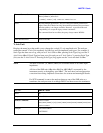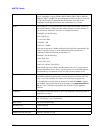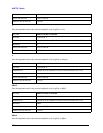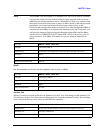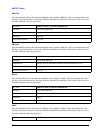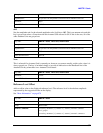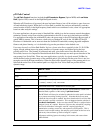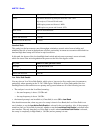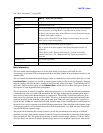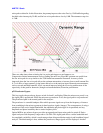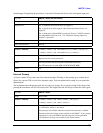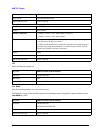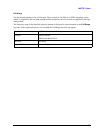
879
AMPTD Y Scale
µW Path Control
The µW Path Control functions include the µW Preselector Bypass (Option MPB) and Low Noise
Path
(Option LNP) controls in the High Band path circuits.
When the µW Preselector is bypassed, the user has better flatness, but will be subject to spurs from out
of band interfering signals. When the Low Noise Path is enabled, the analyzer automatically switches
around certain circuitry in the high frequency bands which can contribute to noise, when it is appropriate
based on other analyzer settings.
For most applications, the preset state is Standard Path, which gives the best remote-control throughput,
minimizes acoustic noise from switching and minimizes the risk of wear out in the hardware switches.
For applications that utilize the wideband IF paths, the preset state is the µW Preselector Bypass path, if
option MPB is present. This is because, when using a wideband IF such as the 140 MHz IF, the µW
Preselector’s bandwidth can be narrower than the available IF bandwidth, causing degraded amplitude
flatness and phase linearity, so it is desirable to bypass the preselector in the default case.
Users may choose Low Noise Path Enable. It gives a lower noise floor, especially in the 21–26.5 GHz
region, though without improving many measures of dynamic range, and without giving the best
possible noise floor. The preamp, if purchased and used, gives better noise floor than does the Low
Noise Path, however its compression threshold and third-order intercept are much poorer than that of the
non-preamp Low Noise Path. There are some applications, typically for signals around 30 dBm, for
which the third-order dynamic range of the standard path is good enough, but the noise floor is not low
enough even with 0 dB input attenuation. When the third-order dynamic range of the preamp path is too
little and the noise floor of the standard path is too high, the Low Noise Path can provide the best
dynamic range.
Key Path: AMPTD Y Scale
Mode: SA, BASIC, PNOISE, VSA , LTE, LTETDD
Scope: Meas Global
Remote Command: [:SENSe]:POWer[:RF]:MW:PATH STD|LNPath|MPBypass|FULL
[:SENSe]:POWer[:RF]:MW:PATH?
Example: :POW:MW:PATH LNP Enables the Low Noise path
Notes: If a Presel Center is performed, the analyzer will momentarily switch to the
Standard Path, regardless of the setting of
µW Path Control
The DC Block will always be switched in when the low noise path is switched
in, to protect succeeding circuitry from DC. Note that this does not mean
“when the low noise path is enabled” but when, based on the Low Noise Path
rules, the path is actually switched in. This can happen when the selection is
Low Noise Path Enable . In the case where the DC Block is switched in the
analyzer is now AC coupled. However, if the user has selected DC coupling,
the UI will still behave as though it were DC coupled, including all
annunciation, warnings, status bits, and responses to SCPI queries. This is
because, based on other settings, the analyzer could switch out the low noise
path at any time and hence go back to being DC coupled.
Alignment switching ignores the settings in this menu, and restores them
when finished.



